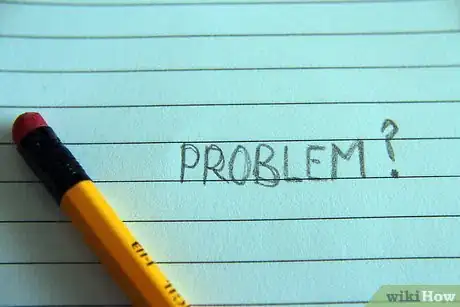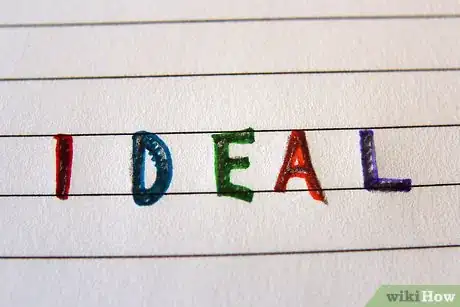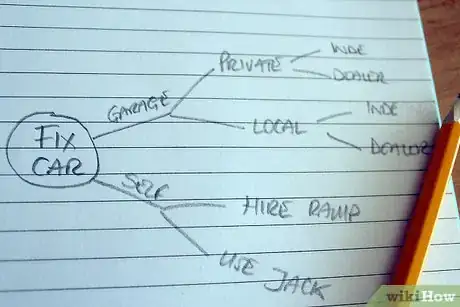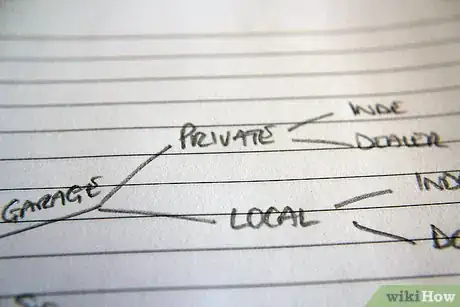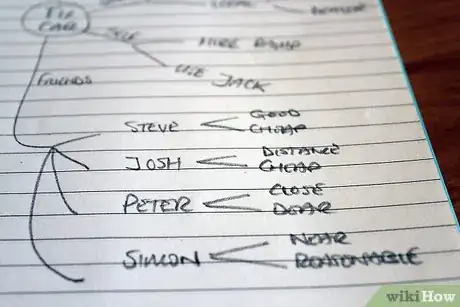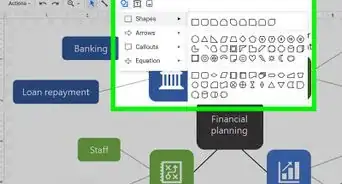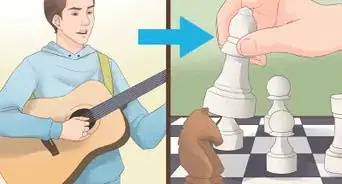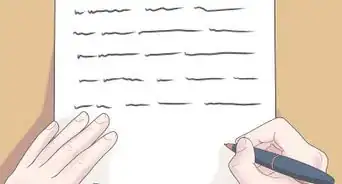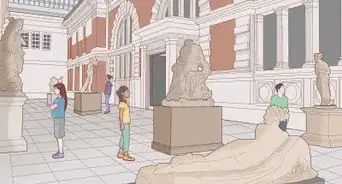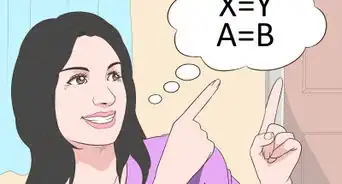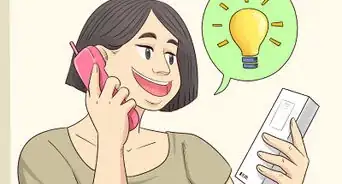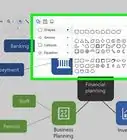This article was co-authored by Jeff Siegel. Jeff Siegel is a Holistic Life Coach and the Founder of Jeff Siegel Wellness. With nearly 10 years of experience, he specializes in mind-body medicine, life coaching, health and wellness coaching, mindfulness, corporate training, and transformational public speaking. He received a Master of Education from Harvard Graduate School of Education, a Master of Buddhist Studies from The University of Hong Kong, and a BSc in Neuroscience & Biology from Emory University. He’s also a certified personal trainer, a certified Eating Psychology Coach, and a certified Koru Mindfulness Teacher.
This article has been viewed 85,550 times.
If you want to solve a problem, it's a good idea to combine
- mind mapping and
- problem solving tools (like brainstorming, asking questions, drawing a diagram...).
This way, you can profit from the benefits of each approach.
(If you are not yet familiar with mind mapping, have a look at the wikiHow article
How to Make a Mind Map)
Steps
-
1Start your mind map with the topic of your problem.
- Avoid a description of your problem that is too narrow.
-
2Use the IDEAL strategy for problem solving.
- IDEAL stands for
- I = identify problems and opportunities
- D = define alternative goals
- E = explore possible strategies
- A = anticipate and act
- L = look and learn.
Advertisement - IDEAL stands for
-
3Make the IDEAL stages the main branches of your map.
-
4Develop your ideas on each stage.
- Develop your ideas in subbranches.
- Use problem solving tools for each stage.
- You find a collection of problem solving tools in the "Tips" section below.
-
5Nest the IDEAL stages if it suits your problem.
- See the video below for an example.
Expert Q&A
-
QuestionCan mind maps help you brainstorm specific life goals?
 Jeff SiegelJeff Siegel is a Holistic Life Coach and the Founder of Jeff Siegel Wellness. With nearly 10 years of experience, he specializes in mind-body medicine, life coaching, health and wellness coaching, mindfulness, corporate training, and transformational public speaking. He received a Master of Education from Harvard Graduate School of Education, a Master of Buddhist Studies from The University of Hong Kong, and a BSc in Neuroscience & Biology from Emory University. He’s also a certified personal trainer, a certified Eating Psychology Coach, and a certified Koru Mindfulness Teacher.
Jeff SiegelJeff Siegel is a Holistic Life Coach and the Founder of Jeff Siegel Wellness. With nearly 10 years of experience, he specializes in mind-body medicine, life coaching, health and wellness coaching, mindfulness, corporate training, and transformational public speaking. He received a Master of Education from Harvard Graduate School of Education, a Master of Buddhist Studies from The University of Hong Kong, and a BSc in Neuroscience & Biology from Emory University. He’s also a certified personal trainer, a certified Eating Psychology Coach, and a certified Koru Mindfulness Teacher.
Holistic Life Coach Yes, they are a great tool for expansive, creative thinking that allows you to break out of this more rigid, discursive mindset. They help you be more visually creative and artistic. I think they can allow you to consider possibilities that you wouldn't necessarily consider when writing things down in a more traditional rope fashion.
Yes, they are a great tool for expansive, creative thinking that allows you to break out of this more rigid, discursive mindset. They help you be more visually creative and artistic. I think they can allow you to consider possibilities that you wouldn't necessarily consider when writing things down in a more traditional rope fashion.
Things You'll Need
- blank paper, size A4 or larger
- pens, preferably in different colours
- optional: text markers
-
optional: mind mapping software
- this is great for keeping your tool map up to date
-
for example open source software like
- Freeplane (download at http://freeplane.sourceforge.net/wiki/index.php/Main_Page) or
- FreeMind (download at http://freemind.sourceforge.net/wiki/index.php/Main_Page).
References
- Bransford, J.D.; Stein, B.S.: The IDEAL Problem Solver. W.H. Freeman and Company, New York 1993 (Source for the IDEAL strategy)
